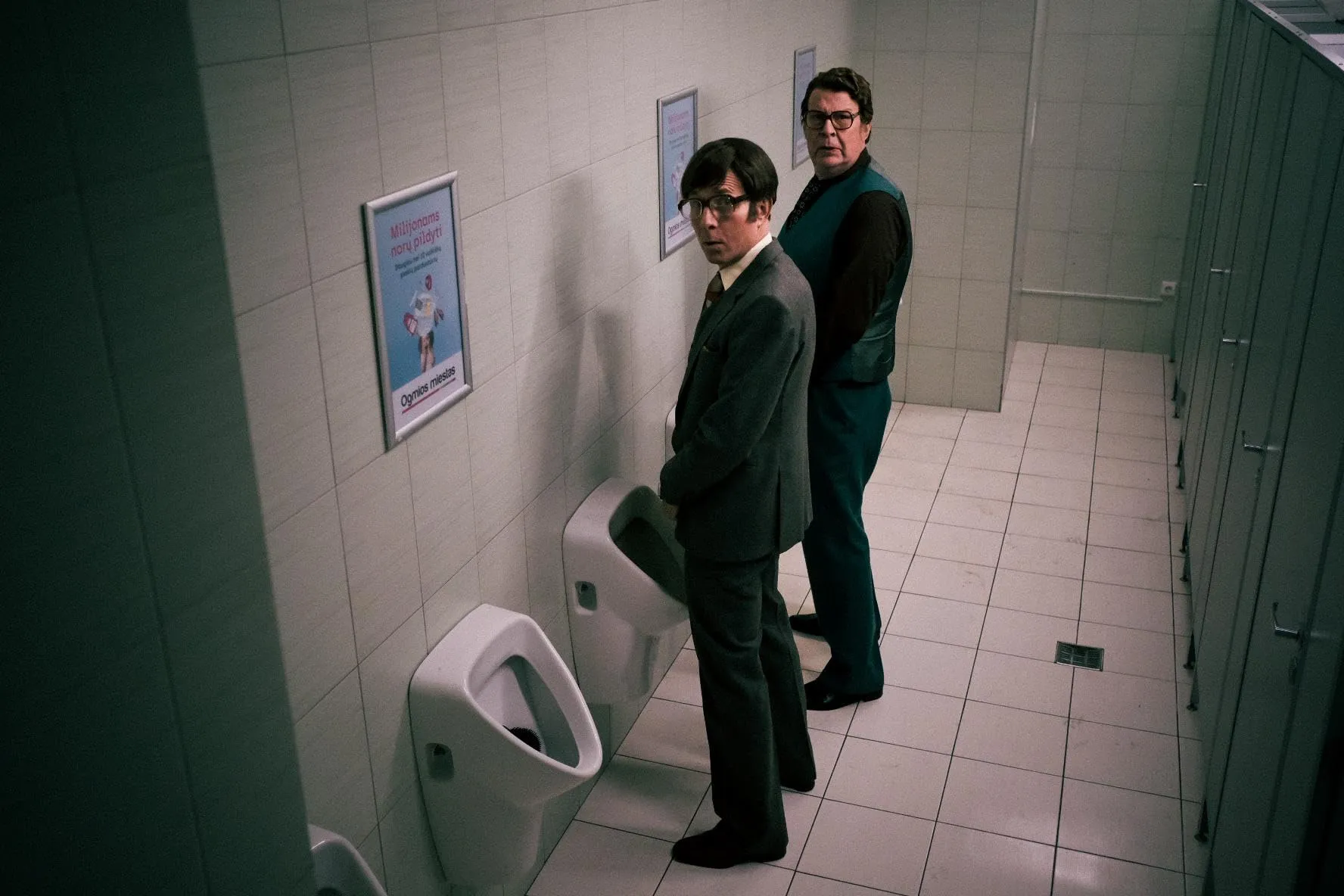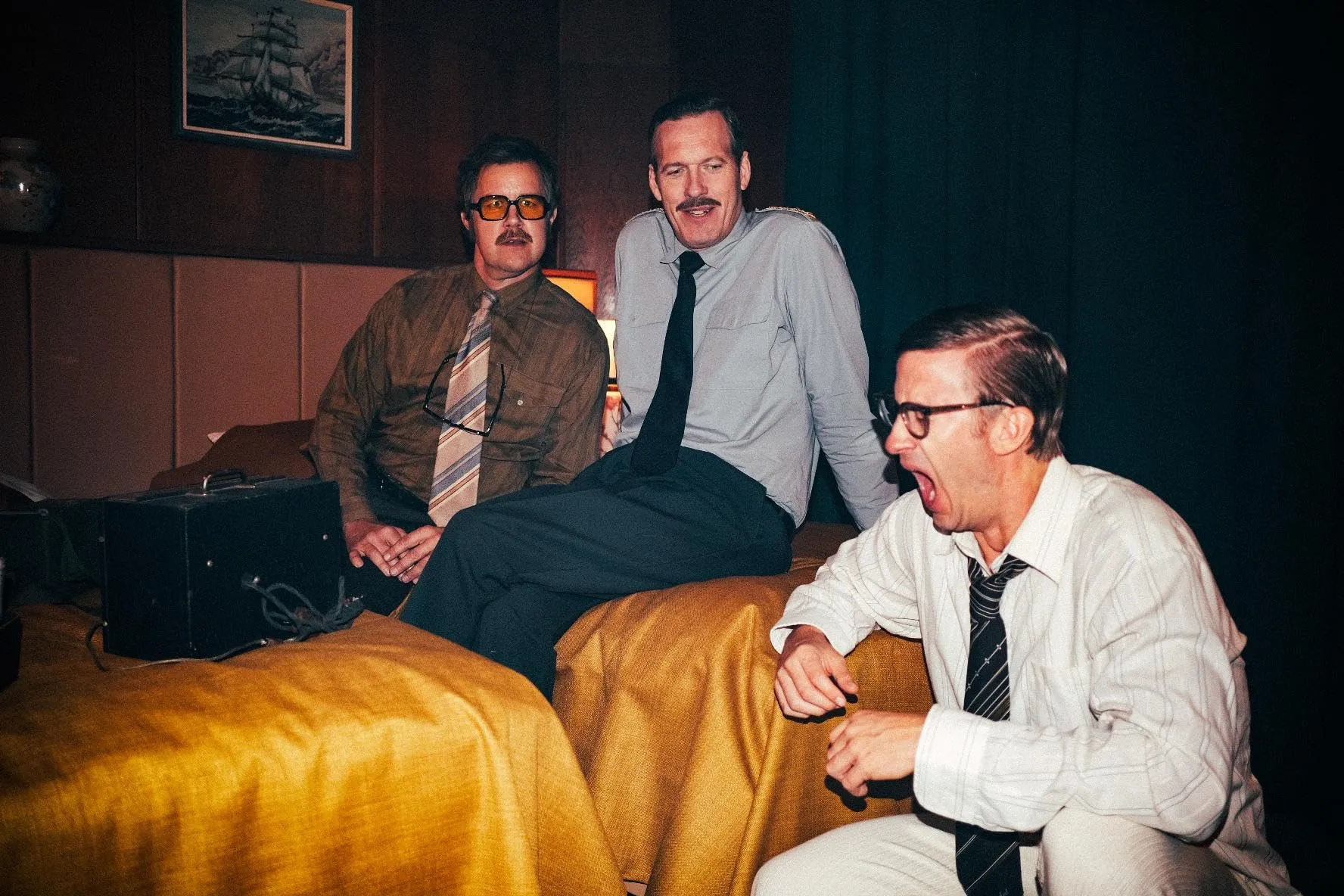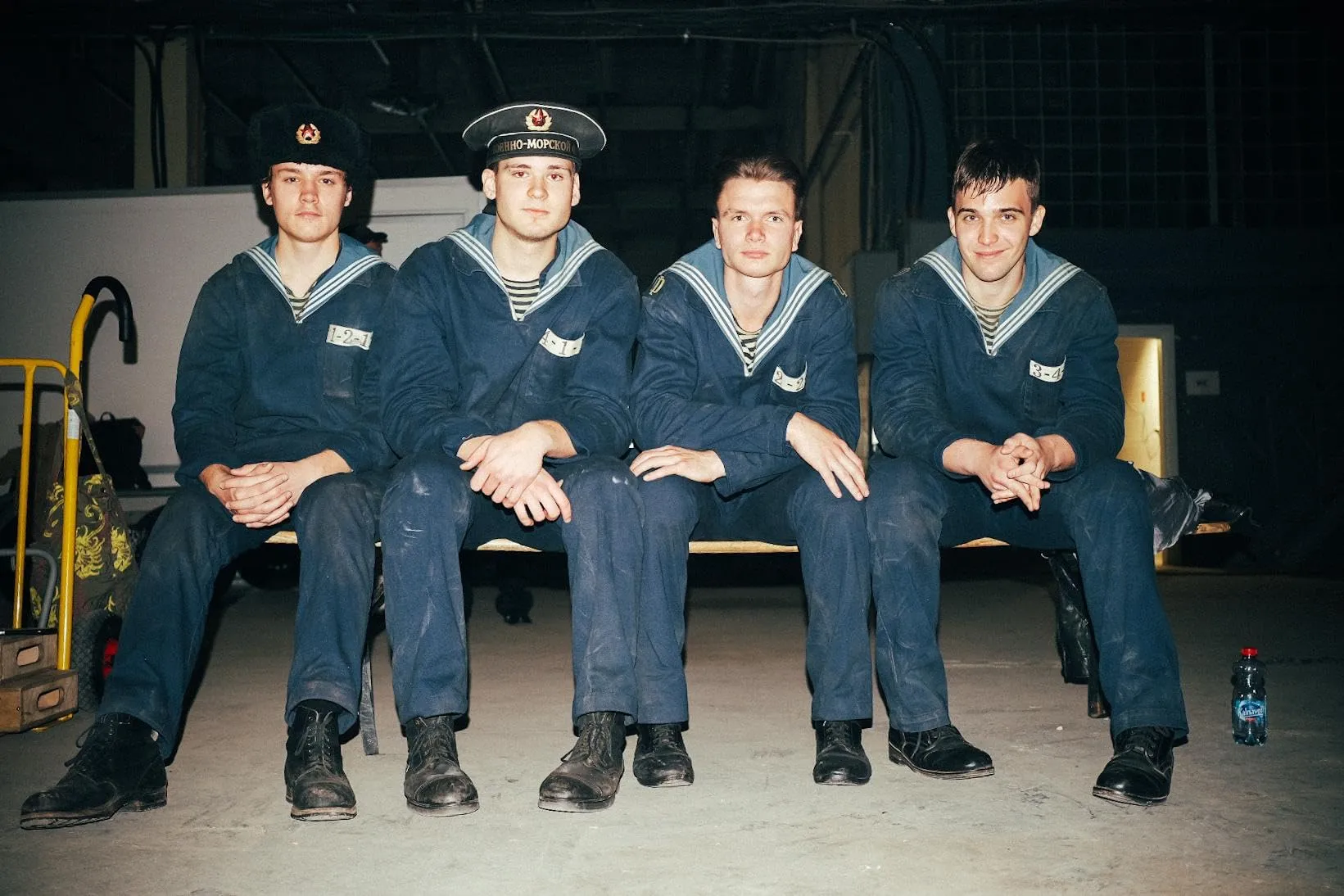A Soviet Whiskey-class submarine, its crew celebrating an officer’s child’s birth, strays off course and crashes into Swedish waters during October 1981. This unexpected event serves as the starting point for exploring Cold War tensions through a comedic perspective.
The series transforms historical events into a stark examination of human error and geopolitical tension. The narrative strips away formal political narratives, exposing the raw, absurd undercurrals of international conflict. By presenting these moments through dark humor, the story reveals the precarious nature of global relationships.
The 1980s backdrop provides a rich environment for examining complex political dynamics. Rendered through a satirical lens, the narrative exposes the fragile mechanisms of international diplomacy, where slight misjudgments could trigger catastrophic consequences.
The submarine’s accidental intrusion becomes a metaphor for the unpredictable and often irrational mechanisms driving global interactions. Each character’s actions reflect the larger systemic pressures and personal vulnerabilities that shape historical moments.
Shadows of History, Cast in Satire
The Cold War existed as a suspended moment—a lingering threat of potential destruction. A Soviet Whiskey-class submarine, seemingly out of place, drifted into Swedish waters through a sequence of chaotic events. This incident revealed the strange intersections of geopolitical tension and human error.
The series transforms a potential historical documentation into a narrative exploring human complexity. Creators adapt the story, highlighting the unexpected comedy within serious political circumstances. The submarine’s crew and international leadership become characters revealing deeper truths about institutional weakness and individual unpredictability.
Sweden emerges as an intriguing narrative element—positioned between global powers while maintaining its distinctive perspective. The nation’s experience reflects the complex dynamics of international relations, where neutrality becomes both a strategic choice and an existential challenge.
The story explores how small actors navigate massive geopolitical tensions, revealing intricate human responses to overwhelming systemic pressures.
The Absurd Dance of Power and Fragility
In “Whiskey on the Rocks,” comedy reveals the ridiculous nature of human ambition against historical indifference. The series uses sharp critique to paint world leaders as exaggerated characters. Ronald Reagan, the archetypal cowboy, shoots targets with Brezhnev’s image, his performance hiding the terrifying reality of power.
Brezhnev appears as a fragmented figure, trapped in mental decline. Sweden’s Prime Minister, Thorbjörn Fälldin, moves through turmoil with passive detachment, offering a stark contrast to aggressive political figures. These characters, both familiar and distorted, show how history shifts through imperfect human actions.
Dark comedy permeates the narrative, transforming potential tragedies into uncomfortable jokes. A Soviet submarine veers off course due to crew intoxication, crashing not through historical inevitability but human mistakes. Coastal fishermen argue over snacks, barely acknowledging the geopolitical crisis emerging nearby.
Such scenes expose the delicate nature of human systems, suggesting how complex structures can unravel through seemingly trivial moments.
The narrative carries a stark Scandinavian perspective—pragmatic, subdued, and unflinchingly bleak. Its understated humor, pregnant pauses, and grim juxtapositions capture a distinctive satirical approach. Reminiscent of works exploring political absurdity, the series presents laughter intertwined with despair, revealing how humor helps us confront overwhelming global tensions.
Faces of Power, Shadows of Frailty
In “Whiskey on the Rocks,” characters transcend individual identities, becoming symbols of humanity’s complex relationship with power. Rolf Lassgård’s portrayal of Thorbjörn Fälldin reveals a nuanced character caught between personal solitude and historical pressures. His performance communicates deep internal struggles, suggesting leadership’s psychological burden.
Elsa Saisio’s Aleksandra Kosygina emerges as a complex diplomat, navigating linguistic and political landscapes with remarkable skill. Her character moves beyond simple representation, presenting a multifaceted persona whose interactions reveal intricate psychological landscapes.
Mark Noble’s depiction of Ronald Reagan explores political performance, transforming the character into a commentary on leadership’s performative aspects. Noble crafts a persona that exposes the fragile connections between charisma and genuine capability.
Kestutis Stasys Jakstas portrays Brezhnev as a deteriorating figure, symbolizing institutional decline. His performance captures the vulnerability of political systems dependent on individual personalities.
Supporting characters add texture to the narrative. The Jansson brothers provide human scale, while peripheral performances illuminate broader societal dynamics. Each actor contributes to a rich exploration of human complexity within political structures.
The ensemble creates a compelling portrait of institutional and personal vulnerabilities, revealing how human imperfections shape historical moments.
The Aesthetic of Absurdity: Crafting a World on the Brink
Whiskey on the Rocks crafts a visual narrative that pulses with raw emotional depth. The production design captures a world suspended between tension and absurdity—submarines echo with unspoken stories, Soviet spaces shimmer with calculated opulence. Intricate details paint a rich landscape: drab crew uniforms, Swedish administrative spaces, all reflecting the complex mechanics of global tensions.
Subtle imperfections peek through the meticulously constructed world—a slightly modern collar, an overly polished prop—suggesting the underlying artifice of historical reconstruction.
Stein’s directorial approach transforms camera work into a storytelling mechanism. Expansive shots reveal a submarine stranded like a metallic behemoth, symbolizing institutional vulnerability. Intimate frames expose human fragility—a diplomat’s nervous perspiration, a leader’s subtle trembling.
Narrative rhythm mimics emotional turbulence. Calm moments erupt into kinetic sequences, reflecting the unpredictable nature of political drama.
Musical and sound elements generate atmospheric complexity. Playful melodies dance against submerged mechanical undertones, creating a soundscape that vibrates between comedic absurdity and profound existential threat. This sensory experience captures the nuanced emotional terrain of political intrigue.
The Absurdity of Power: Cycles of Conflict and Fragility
In “Whiskey on the Rocks,” Cold War politics transform into a tragicomic spectacle. The United States and Soviet Union emerge as nations trapped by their own exaggerated impulses, wielding power with reckless abandon.
Ronald Reagan’s brash demeanor and Leonid Brezhnev’s waning influence reveal the raw undercurrents of global tension. Their leadership exposes a world where political strategy blends seamlessly with destructive ego.
Sweden’s precarious stance of neutrality becomes a complex narrative thread. Prime Minister Thorbjörn Fälldin stands as a quiet counterpoint to the thunderous rhetoric of global superpowers. His measured approach highlights the fragility of national identity amid international turmoil.
The narrative strips away diplomatic facades, revealing leadership as a deeply human performance. Political figures emerge not as grand strategists, but as vulnerable individuals navigating impossible circumstances. Their choices reflect personal limitations more than grand designs.
The series transforms historical events into a mirror reflecting current global dynamics. Political theater repeats its patterns, with human frailty consistently undermining rational governance. Each moment suggests how thin the veneer of diplomatic control truly remains.
The Rhythm of Chaos: Pacing and the Weight of Absurdity
The six-episode structure of Whiskey on the Rocks emerges like an absurd exploration of Cold War tensions. Episodes weave through interconnected conflicts, with resolutions as unpredictable as the submarine’s erratic path through historical moments.
This approach reflects the unpredictable world of political interactions, where events unfold in complex, non-linear patterns. The comedic elements build steadily, sustained through recurring unexpected moments: communication breakdowns across borders, power struggles that crumble internally, and an underlying sense of the surreal that permeates intense situations.
The series captures the delicate interplay between comedy and serious political drama. Humor serves as a window into the complex mechanisms of power, revealing the fragility of human interactions during high-stakes moments. Each scene peels back layers of institutional absurdity, exposing the underlying human vulnerabilities that shape global narratives.
Echoes of History, Reflections of Now
In the icy waters of conflict, Whiskey on the Rocks reflects both past and current global tensions. The series explores how power dynamics unfold, revealing human vulnerabilities beneath political facades.
Its narrative cuts through time, connecting the nuclear tensions of 1981 with contemporary global struggles. Leaders transform, yet the underlying patterns of human behavior persist – revealing the recurring dance of ambition and potential destruction.
Political narratives like this expose the fragile mechanisms of governance. They uncover how institutions operate, stripping away official veneer to reveal raw human impulses. The story uses humor as a lens, examining how power structures teeter between rationality and absurdity.
Audiences will find a compelling exploration of systemic contradictions, where dark humor reveals deeper truths about human interaction and institutional dynamics. This work speaks to those interested in exploring the complex intersections of politics, human nature, and storytelling.
The Review
Whiskey on the Rocks
Whiskey on the Rocks weaves satire with existential themes, converting a Cold War incident into a stark reflection on power's delicate nature. Dark humor, nuanced characters, and subtle commentary extend beyond its historical backdrop, revealing uncomfortable connections to current political landscapes. Despite occasional narrative compression toward its conclusion, the series delivers a gripping and sardonic examination of leadership and human weakness. Viewers drawn to Nordic storytelling and political critique will find this exploration both entertaining and thought-provoking.
PROS
- Sharp and intelligent satire that blends humor with dark political commentary.
- Strong performances, particularly from Rolf Lassgård and Elsa Saisio.
- Authentic production design and period-accurate details.
- Balances comedic absurdity with deeper existential themes.
CONS
- Pacing issues, particularly in the rushed finale.
- Some storylines feel underdeveloped due to time constraints.
- Exaggerated caricatures may alienate viewers seeking more subtle character portrayals.






















































